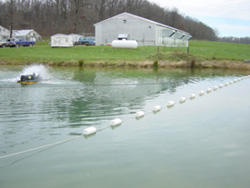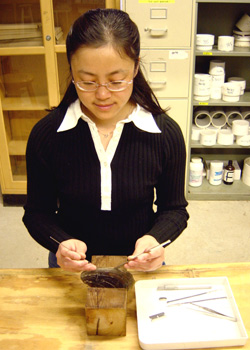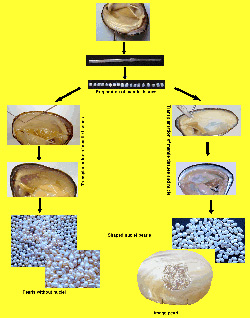The frequency of natural pearl formation in freshwater mussels is low: approximately 1 in 10,000 mussels may produce a valuable pearl. Freshwater pearl culture technology was first developed in China about 2,000 years ago, and commercial pearl culture was initiated in Japan and China in the late 1960s and early 1970s. Today, China produces 95% of the freshwater pearls sold in the world market, with an estimated annual production of 1500 metric tons (mt) and exports of 600 mt. In recent decades, freshwater pearl culture techniques have been adopted in other countries such as India, Bangladesh, Thailand, Vietnam, and the United States. Species native to North America such as the washboard, threeridge, and pink heelsplitter have revealed the greatest potential to produce image, nucleated and non-nucleated pearls in the United States. Freshwater pearls vary in color, and those purple, pink, and lavender pearls fetch higher prices from buyers. The pink heelsplitter, a large species with rich purple and iridescent nacre was studied at FMCC for producing purple pearls. Mussels were given surgical operations, including the excision and preparation of pieces of mantle tissue, and the transplantation of these pieces into live mussels. The transferred mantle tissues started cell division and multiplication, and then created a pocket-like pearl sac for depositing nacre. The nacre was initially soft and glue-like and later hardened to become a pearl. These small pearls then grew slowly as more nacre was deposited until they reached harvest size after a long-term culture period.

A purple non-nucleated pearl and image pearl produced from the pink heelsplitter .

Culture of implantated mussels in the FMCC pond.

Implantation for pearl culture.

